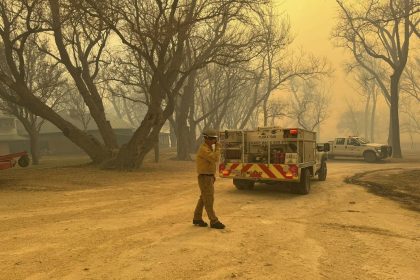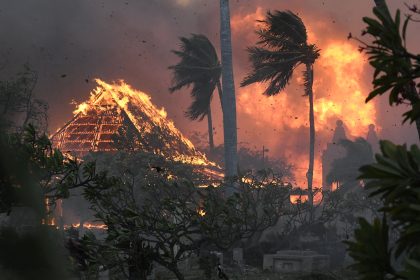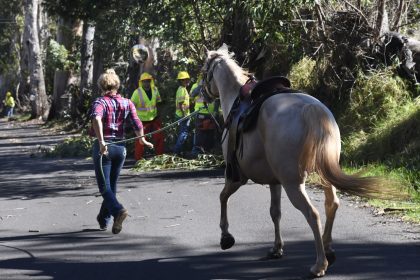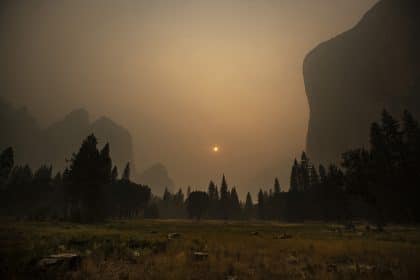Study Finds Wildfire Hazards in Residential Fences and Mulch Beds
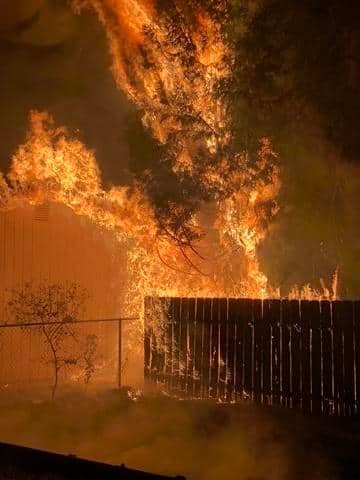
GAITHERSBURG, Md. — For many, summertime means relaxing in their backyard behind the privacy of a large wooden fence and the beauty of a well-mulched flower bed.
A new study by the National Institute of Standards and Technology, however, suggests the intersection of the two greatly increases the odds of a catastrophe in regions prone to wildfires.
Over the course of nearly 200 fire experiments, researchers at the institute burned residential fences and mulch beds to examine the role they play in spreading fire.
What they found was that fire hazard was generally disproportionately higher when combustible objects burned together. Flames rushed along mulch lining the base of fences, and infernos quickly swallowed up pairs of fences when they burned in close proximity to each other.
In contrast, stand-alone fences clear of mulch or debris burned at a much slower pace.
Based on their findings, the authors of the new report recommended that homeowners not place two fences back to back, keep other combustible surfaces far apart and take important other actions.
Wildfires can spread quickly through and potentially overwhelm communities adjacent to the wilderness — the so-called wildland-urban interface. Post-wildfire studies, including NIST’s study of the 2018 Camp Fire, have pinpointed fences and mulch as culprits in spreading fire.
“Fences that caught fire were often completely gone. If you looked closely, you could see some nails and screws remaining. The ones we saw partially burned were left standing because they were defended by someone,” said Alexander Maranghides, a co-author of the report, and leader of the NIST’s Camp Fire study, in a written statement. “These things don’t put themselves out.”
Fences and mulch can act as bridges for flames to reach buildings and as launch pads for airborne embers to ignite fires far away, but fire codes in the U.S. do not address how they should be installed and maintained, and little guidance exists to help homeowners.
To help build a technical foundation for the development of guidelines in the future, the authors of the new report sought to study fence and mulch fires under conditions that are closer to real life than what has been used in previous studies.
The research team burned fences, mulch beds, and combinations of both outdoors, igniting the materials several meters downwind from a wind machine used to simulate real fire-spreading conditions. Downwind of the fire, the team set up a shed or mulch bed as a target.
Through 187 experiments, they burned fuels alone and in combination, including fences of several common designs made of wood, vinyl or wood-plastic composites and mulch beds composed of shredded hardwood, pine bark nuggets, pine straw or rubber.
The researchers captured footage of the blazes to gauge the speed and pattern of flame spread and to record how often embers ignited the target shed. They also conducted research in the lab to measure how quickly samples of fence raw materials released heat.
Taking all the data together, the authors categorized the relative fire threat level for the various test conditions.
“In the highest hazard category, the fences and mulch are going to carry the fire along toward your house in a matter of a few minutes, not hours,” said NIST physicist Kathryn Butler, co-lead author of the report.
The most dangerous fires observed were those that had multiple sources of fuel burning at the same time. In the tests where mulch lined the bottom of a fence, fire tended to swiftly advance across the beds of fine combustibles, which served as rich sources of embers and allowed flames to quickly ignite the fence along its entire length.
The researchers learned that the fires could get much worse as well.
When two fences made of combustible materials were placed back to back — mimicking the scenario where two neighbors each put up a fence along their property lines — the most intense flames of the entire project erupted.
After the fire was established, long-reaching flames quickly shot up, completely engulfing fence panels 8 feet long and 6 feet tall in as little as four minutes. Embers sparked fires on the target in almost every one of these tests.
When fence panels burned alone, it was a different story. Flames slowly chewed away at the fences and did not spread very far during these experiments, with some progressing less than 3.3 feet in an hour.
Although these fires burning slowly on a sole fuel source were less hazardous and more manageable, high winds that may accompany a wildfire could blow debris toward the fence, adding fuel to the fire.
The authors of the study crafted seven recommendations for homeowners living in WUI zones based on their analysis. The first recommendation is to avoid doubling up on fences completely, as the study found that fences as far apart as 3 feet still produced large flames.
The second says that combustible fences should be placed where they will not interfere with exit routes.
Other recommendations advise keeping combustibles as far away from each other as possible, even between property lines, and clearing yards — and especially the space near or between fences — of debris, such as leaves or fallen branches.
The report also indicates that homeowners should replace combustible landscape features with those consisting of noncombustible material such as stone, steel or cement, when possible.
Because of the ever-present danger of embers during wildfires — even when there is a large distance between a structure and the fire — the researchers also urge homeowners to enhance their homes to resist ember ignition through a process called hardening. The detailed steps for hardening are described in a separate NIST report on mitigating wildfires.
Dan can be reached at [email protected] and at https://twitter.com/DanMcCue.



















